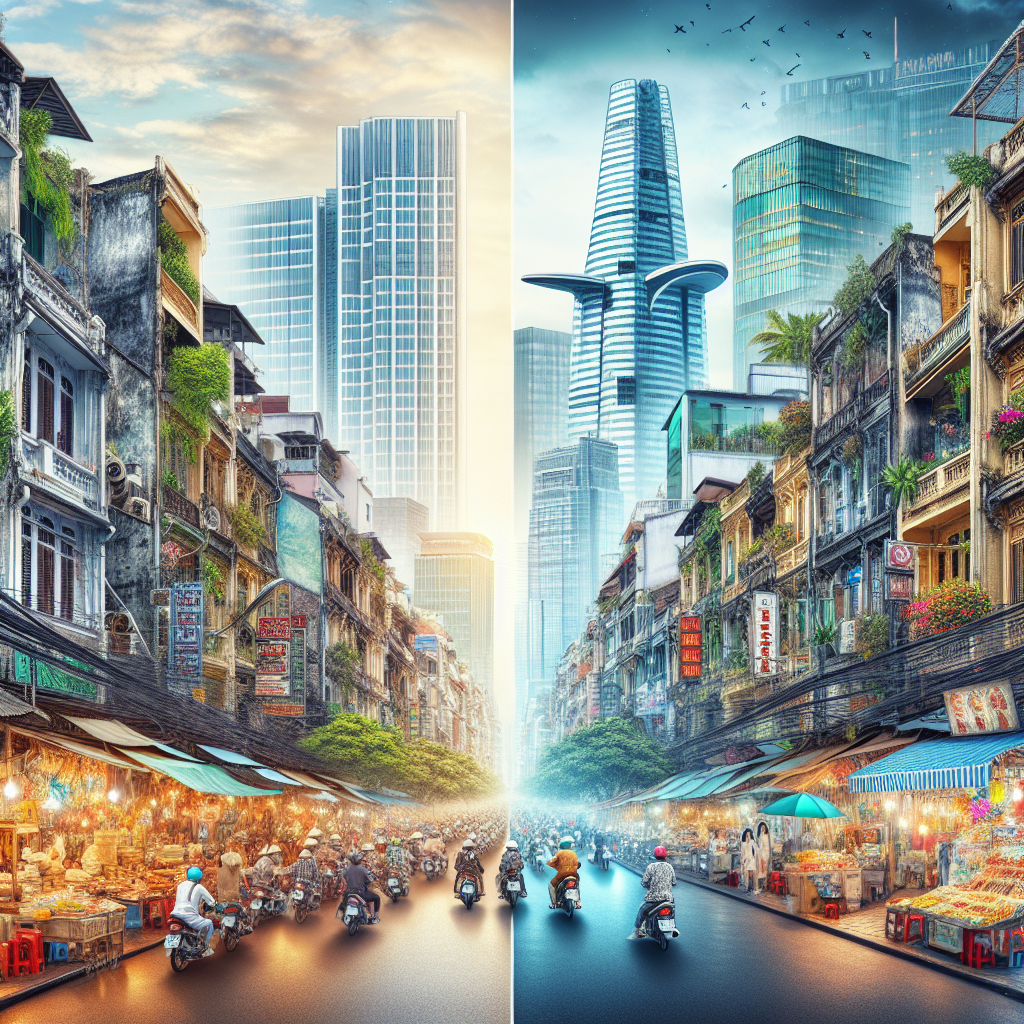A Tale of Two Cities: Exploring the Contrasts of Hanoi and Ho Chi Minh City
Vietnam, a country with a rich tapestry of history, culture, and natural beauty, is home to two dynamic cities that, despite their shared heritage, could not be more different. Hanoi, the capital, exudes an atmosphere that is distinctly Vietnamese, with its centuries-old architecture and a pace of life that is reflective and serene. Ho Chi Minh City (HCMC), formerly known as Saigon, is the bustling economic heart of the country, where the pace is fast, and the energy is palpable. This article delves into the contrasts between Hanoi and Ho Chi Minh City, exploring their unique identities and what they offer to both residents and visitors.
Historical Contrast
Hanoi, with its over 1,000 years of history, is considered the cradle of Vietnamese culture. The city is a living museum, home to ancient temples, unique theatres, and old quarters, where the streets still bear the names of the trades that defined them centuries ago. Walking through Hanoi is like stepping back in time, especially within the confines of the Old Quarter, where preservation laws maintain the original street layout and architecture.
Conversely, Ho Chi Minh City, though not without its own historical landmarks, is a testament to Vietnam’s rapid modernization. The city’s skyline is dominated by sleek skyscrapers and modern architecture, symbolizing its role as the economic powerhouse of Vietnam. The War Remnants Museum and the Reunification Palace stand as reminders of the country’s turbulent recent past, but overall, the city’s narrative is one of progress and future possibilities.
Cultural Distinctions
The cultural life in Hanoi is steeped in tradition. It is the center of classical Vietnamese literature, arts, and education. The city is famed for its sophisticated performances of traditional Vietnamese opera (Ca Trù) and water puppetry, an art form that dates back to the 11th century. The cuisine in Hanoi is reflective of the North’s seasonal variations, offering a wide array of flavors with a focus on freshness and simplicity.
Ho Chi Minh City, on the other hand, is a cultural melting pot. Its colonial past is still visible in the Notre-Dame Cathedral Basilica of Saigon and the Saigon Central Post Office, built during the French colonial era. The city’s culture is a blend of traditional and contemporary, with a vibrant nightlife that rivals any other major city in Southeast Asia. The cuisine in HCMC is diverse, with influences from various international and regional cuisines, making it a foodie’s paradise.
Pace of Life
One of the most striking differences between Hanoi and Ho Chi Minh City is the pace of life. Hanoi moves at a more leisurely pace, where the rhythms of life are dictated by tradition and the changing seasons. The city’s numerous parks and lakes offer a respite from the hustle and bustle, allowing for moments of reflection and relaxation.
In contrast, Ho Chi Minh City is always on the move. The energy here is undeniable, with bustling streets, a thriving business district, and a nightlife that never seems to end. The city’s pace reflects its residents’ ambition and optimism for the future, making it a magnet for young professionals from across Vietnam and beyond.
Economic Dynamics
Economically, the two cities also differ significantly. Hanoi, as the political capital, is the center of government and administration. It has a diversified economy, with significant contributions from trade, agriculture, and tourism. Its slower economic growth, compared to HCMC, is balanced by a focus on cultural preservation and quality of life.
Ho Chi Minh City is the economic engine of Vietnam, leading the country in almost all economic indicators. It’s a hub for foreign investment, with a booming real estate market, manufacturing sectors, and tech startups. The city’s economic dynamism is palpable, evident in its vibrant markets, thriving business districts, and the entrepreneurial spirit of its inhabitants.
Conclusion
Hanoi and Ho Chi Minh City, with their distinct characters, offer complementary perspectives on Vietnam’s past, present, and future. While Hanoi cherishes its cultural heritage and serene lifestyle, Ho Chi Minh City rushes towards modernization and economic prosperity. Together, they embody the complexities and contrasts of Vietnam, making the country a fascinating place to explore.
FAQs
Q: Which city is better for tourists, Hanoi or Ho Chi Minh City?
A: It depends on what you’re looking for. Hanoi offers a deep dive into Vietnam’s rich culture and history, while Ho Chi Minh City is the place to experience the country’s dynamic growth and vibrant nightlife.
Q: Can I find traditional Vietnamese experiences in Ho Chi Minh City?
A: Absolutely. Despite its modern facade, HCMC is steeped in tradition, from its street food to historical sites like the Cu Chi Tunnels.
Q: Is English widely spoken in both cities?
A: Yes, especially among younger people and in areas frequented by tourists. However, learning a few basic Vietnamese phrases can enrich your experience.
Q: How do the climates of Hanoi and Ho Chi Minh City compare?
A: Hanoi experiences four seasons, with a cold winter, while HCMC has a tropical climate, characterized by a wet and a dry season, and is generally warmer year-round.
Q: Which city is more expensive to live in or visit?
A: Ho Chi Minh City is generally more expensive due to its booming economy and development, especially in terms of real estate and dining. However, both cities offer options to suit a wide range of budgets.
